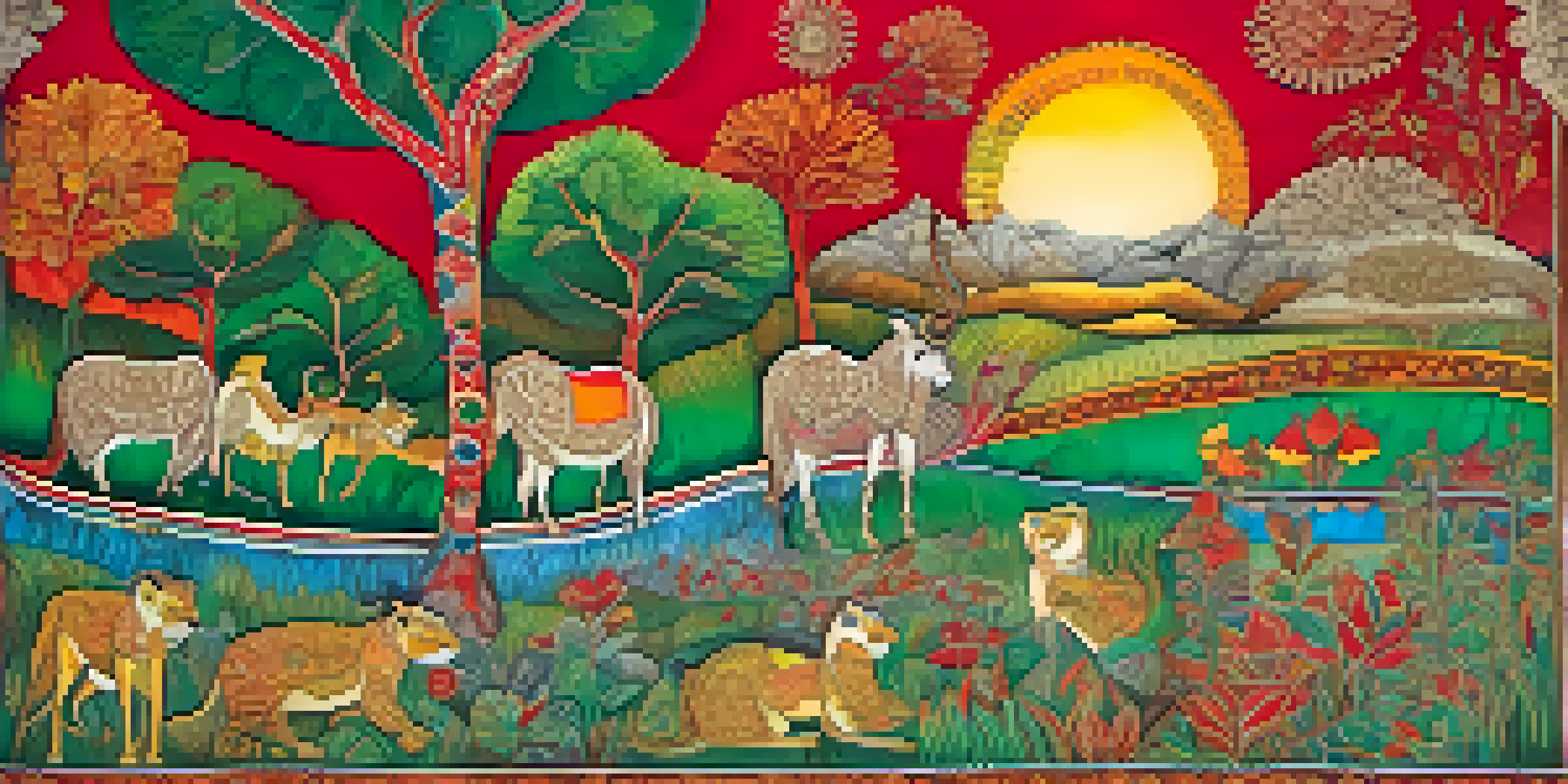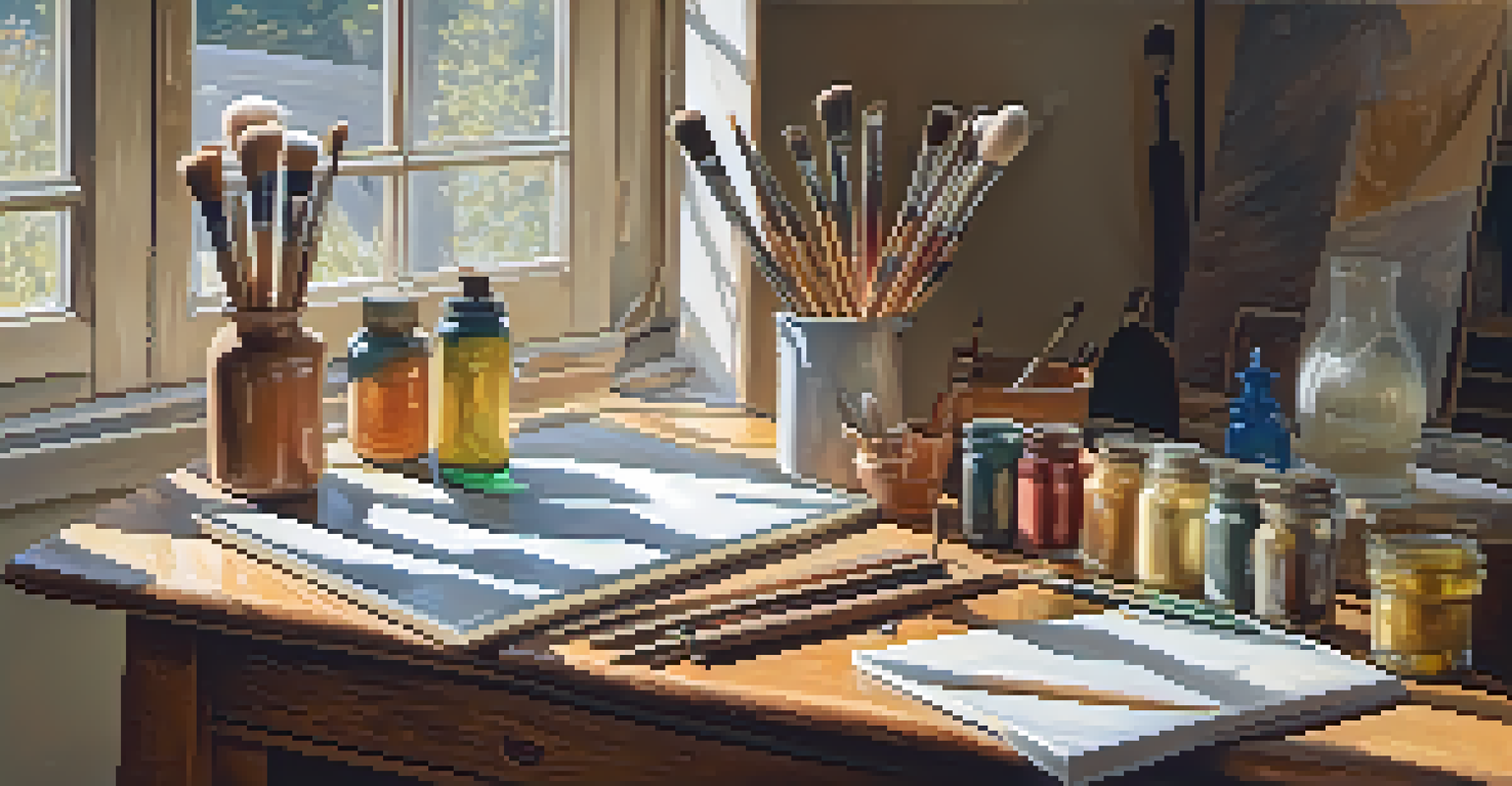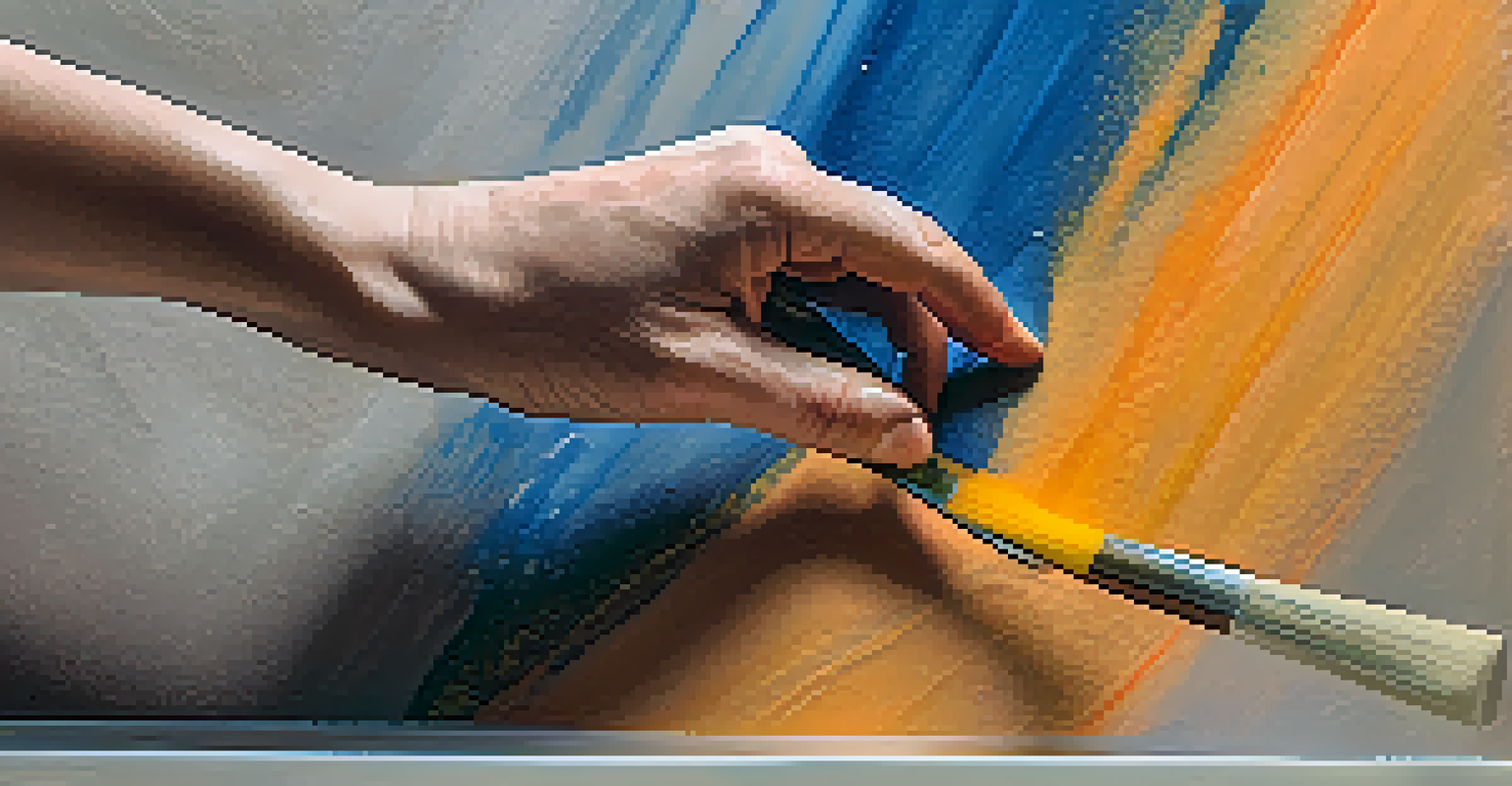Preserving Traditional Painting: Techniques Through Generations

The Rich History of Traditional Painting Techniques
Traditional painting has roots that stretch back thousands of years, with techniques passed down through generations. Each culture has its unique style, from the vibrant colors of Indian Madhubani to the delicate brushwork of Chinese ink paintings. These methods not only reflect artistic expression but also tell stories of community and heritage.
Art is the most beautiful of all lies.
As we delve into the history of painting, we see how materials and techniques evolved with society’s needs and innovations. For example, the use of natural pigments made from minerals and plants was common in ancient cultures, allowing artists to create stunning visuals that stood the test of time. This historical context enriches our understanding of contemporary practices.
Today, many artists strive to keep these traditional techniques alive, blending them with modern styles to create new forms of art. This fusion not only honors the past but also keeps the spirit of traditional painting vibrant and relevant.
Key Techniques Used in Traditional Painting
There are several techniques that have been cherished over the years, each with its unique charm. For instance, the use of egg tempera—a method where pigments are mixed with egg yolk—has been a staple in European painting for centuries. This technique produces a luminous quality that is hard to replicate with modern paints.

Another fascinating method is fresco, where pigments are applied to wet plaster, allowing the colors to become an integral part of the wall. This technique not only showcases the skill of the artist but also demonstrates a deep understanding of materials and their interactions over time.
Preserving Traditional Techniques
Challenges such as dwindling artisans and the shift to synthetic materials threaten the continuity of traditional painting methods.
Artists also employ techniques like woodblock printing and calligraphy, each requiring precision and patience. These methods not only highlight the artist's craftsmanship but also preserve cultural narratives that have been told through generations.
Challenges in Preserving Traditional Techniques
Despite the beauty and significance of traditional painting techniques, there are challenges in preserving them. One major issue is the dwindling number of skilled artisans who are trained in these age-old methods. As modern art forms gain popularity, the time-honored practices risk being overshadowed.
Every artist dips his brush in his own soul, and paints his own nature into his pictures.
Additionally, the materials used in traditional techniques are becoming harder to source. For example, natural pigments from plants and minerals are often replaced with synthetic options, which can alter the authenticity of the artwork. This shift not only impacts the quality but also the cultural significance of the pieces.
Moreover, as new technologies emerge, there’s a growing temptation for artists to adopt digital tools instead. While digital art has its merits, it can sometimes lack the tactile connection that comes with traditional painting methods, making it vital to advocate for the preservation of these techniques.
The Role of Education in Preservation
Education plays a pivotal role in ensuring that traditional painting techniques are preserved for future generations. Art schools and community workshops are increasingly incorporating these methods into their curricula, ensuring that students gain exposure to both historical and contemporary practices. This blend fosters a deeper appreciation for the art form.
Mentorship programs are also essential, where experienced artists pass on their knowledge to younger generations. These one-on-one relationships not only enhance technical skills but also instill a sense of pride in cultural heritage. This personal connection can spark a lifelong passion for traditional painting.
Education's Vital Role
Educational initiatives and mentorship programs are crucial in passing down traditional painting techniques to future generations.
Furthermore, online platforms and social media have opened new avenues for learning and sharing these techniques. Artists from around the world can connect, exchange ideas, and showcase their work, creating a vibrant community dedicated to the preservation of traditional painting.
Contemporary Artists Reviving Traditional Techniques
Many modern artists are actively seeking to revive traditional painting techniques, often blending them with contemporary themes. For example, artists like Kehinde Wiley incorporate historical styles into their portraits, challenging societal norms and celebrating diversity. Such work not only honors traditional methods but also pushes the boundaries of contemporary art.
Another example is the resurgence of interest in hand-painted murals, where artists utilize traditional techniques to tell modern stories. This has created a renewed appreciation for craftsmanship in public spaces, allowing communities to engage with art in a way that feels both timeless and relevant.
These contemporary movements highlight the importance of adaptability in art. By weaving traditional techniques into modern narratives, artists keep these practices alive, ensuring they evolve rather than fade away.
Cultural Significance of Traditional Painting
Traditional painting techniques are not just about aesthetics; they carry deep cultural significance. Each brushstroke can tell a story, preserve a history, or reflect a community's values and beliefs. This cultural dimension makes traditional painting an invaluable asset to global heritage.
For instance, Indigenous art often incorporates symbols and techniques that reflect ancestral knowledge and connection to the land. By preserving these techniques, we honor the stories and experiences of those who came before us, ensuring that their voices continue to resonate.
Modern Artists Revive Traditions
Contemporary artists are blending traditional painting techniques with modern themes, keeping the art form relevant and dynamic.
In today’s fast-paced world, taking time to appreciate and engage with traditional art forms can foster a sense of connection and understanding between cultures. This appreciation can lead to greater respect for diversity and the shared human experience.
The Future of Traditional Painting Techniques
Looking ahead, the future of traditional painting techniques hinges on a balance between preservation and innovation. Artists and educators must continue to advocate for the importance of these methods while embracing new technologies that can enhance their reach. This synergy could open up exciting possibilities for both artists and audiences alike.
Moreover, as global awareness of cultural heritage grows, there is an increasing interest in traditional techniques. This presents opportunities for collaboration and exchange, allowing artists to learn from one another and infuse their work with diverse influences.

Ultimately, the survival of traditional painting techniques depends on community engagement and support. By fostering environments that celebrate these art forms, we can ensure they remain vibrant and cherished for generations to come.